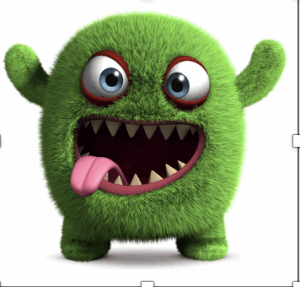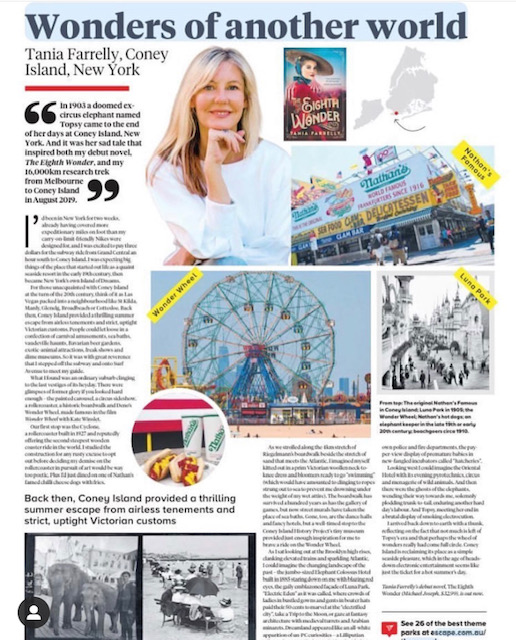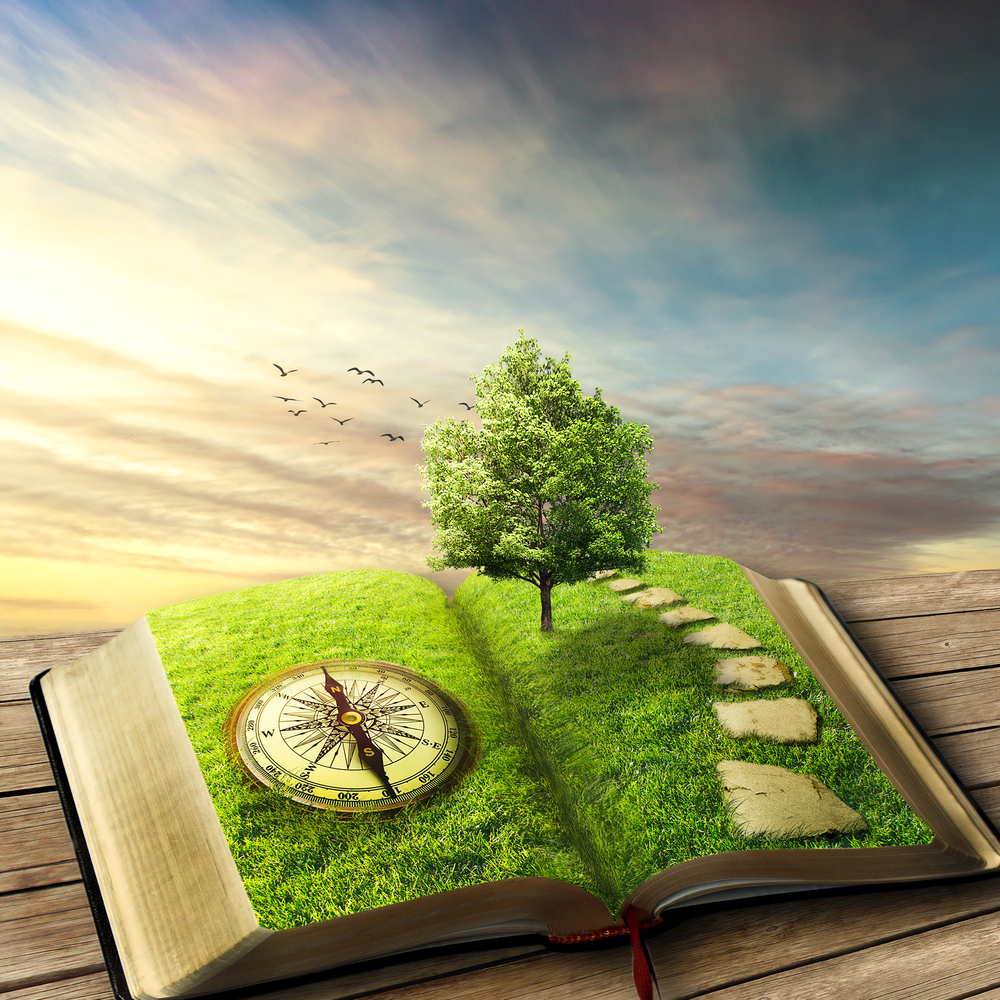As an author and ex-advertising professional, it’s pretty hideous to think that two years of my solid toil could be boiled down to a split-second punch of a computer key on Chat GPT. And no one would care less that a plagiarising computerised super brain had spat out my hard-won manuscript or even this editorial piece. Except funnily enough, two years ago everyone actually did care. An Ipsos Global Advisor survey (July 2023) revealed that almost 2 in 3 Australians were worried about the impact of AI and its effects on their future. This figure is world-beating – the global average across 31 countries is only 52%.So, we were worried but are we still worried as we exercise the fingertips and not the neurons?
And if we are worried, what can we, as mere humans, do about it?
Well, for a start, we can put down our phones and begin to flex the strength of our own magnificent neural networks more often.And that means reducing our reliance on social media and start using our imaginations. Why? Because social media is addictive and can be responsible for inducing feelings of brain drain, loss of self-confidence, and generally posing a risk to our mental health. Put simply, while AI is busy gathering strength, social media is dumbing us down. And if you’ve dabbled with Chat GPT, this scenario below might feel a bit familiar…
‘You know that CV you’ve been struggling with?’ Chat GPT whispers to us in an over-chummy way, ‘Well, I’ll save you a heap of time and effort, leave the creativity and thinking to me.’
To which we respond: ‘Thank goodness, I just can’t think today, because I’m …too flat/ tired/ having a crisis of self-confidence or all of the above. And you’ll probably do a better job.’
You see. It preys on our apathy.
But before I get ahead of myself, let’s get back to the real villain: social media and its secret effect on our dopamine levels.
Why social media is the dope of our times.
 History is littered with stories of human addiction. Opioids, marijuana, kava, alcohol and have always affected a small percentage of the population. But there has never been an addiction so all-pervasive as the one we have today, to dopamine. And it’s caused by our ‘always on’ lifestyles and our constant need to search, refresh, browse, and kill time. Facebook, Twitter, Instagram, Threads, TikTok, text, email and Google searches are making us slaves to our phones. And thus, we are increasingly at the mercy of our ‘search’ neurotransmitter – Dopamine.
History is littered with stories of human addiction. Opioids, marijuana, kava, alcohol and have always affected a small percentage of the population. But there has never been an addiction so all-pervasive as the one we have today, to dopamine. And it’s caused by our ‘always on’ lifestyles and our constant need to search, refresh, browse, and kill time. Facebook, Twitter, Instagram, Threads, TikTok, text, email and Google searches are making us slaves to our phones. And thus, we are increasingly at the mercy of our ‘search’ neurotransmitter – Dopamine.
Why does too much Dopamine pose a threat?
The best way to think of Dopamine is like that cute, likeable and irresistible friend who constantly wants to go off and find stuff to make us happy. It’s kinda friendly, like a Furby of the 1990s movie before it becomes a Gremlin. Or a cute Minion from Despicable Me, before it turns evil. Similarly, the longer you spend scrolling, the higher your dopamine levels rise. And like a Furby becoming a Gremlin, your Dopamine becomes a (as I have coined it), a Dopaminion. And before you know it, you’re hooked.

Say Hello to your ‘Dopaminion’—the dark side of dopamine.
Physiologically, Dopamine is described as the neurotransmitter that causes ‘seeking behaviour’. Susan Weinschenk, Ph.D, is an expert in the area, and her article way back in 2012 “Why we’re all addicted to Texts, Twitter and Google” lends valuable insight.
“Dopamine causes you to want, desire, seek out and search…With the internet, Twitter and texting, you now have almost instant gratification of your desire to seek….Dopamine starts you seeking, then you get rewarded for the seeking, which makes you seek more. It becomes harder to stop checking your email, texting, or phone for new messages or texts. …The constant stimulation of the dopamine system can be exhausting. And the constant switching of attention makes it hard to get anything accomplished.”
It’s an addiction.
This is not such a problem if your Dopaminion is connected to the intellectual or work-based passions that feed learning. But your Dopaminion often has other random ideas which can lead you into a continual loop of distraction, procrastination, and comparison that at best results in time-wasting or a few laughs and at worst self-doubt and disappointment.
Michael Russer‘s blog via The Good Men Project 2013 describes what many of us feel regarding this ‘attraction of distraction’: “The drug of distraction has some nasty side effects, including feelings of disconnect and depression, broken relationships, loss of passion and purpose and an overall sense of being dead inside.”
This has also been connected to the growing health and well-being issues linked to depression and anxiety in society. A study by a psychiatrist at King’s College in the UK ten years ago found that:
” The IQ of those who tried to juggle messages (emails) and work fell by 10 points — the equivalent to missing a whole night’s sleep and more than double the 4-point fall seen after smoking marijuana.”
And according to the British Journal of Nursing, “increased dopamine in the limbic system is linked to suspicious personality, paranoia and withdrawal from social situations.”
Can you see the pattern here? Break the pattern and find your ‘flow’
Don’t despair. Dopamine can be good, great even, when attached to learning about something we are interested in, but the short term ‘high’ we feel in starting to scroll social media becomes a long runway of despair or perceived failure if we don’t get work done or feel the dark side of continual comparison. Not only that, but our imagination becomes stymied. Doping up on social media stops us from achieving FLOW.
‘Flow’ is what helps us achieve mastery, creates moments of achievement, progress, and confidence, and is described as a state when we are fully engaged in something – our concentration is heightened, and time flies. Furthermore, evidence suggests that FLOW is highly correlated with happiness, and individuals who experience a lot of flow in their daily lives tend to develop other positive traits, such as high concentration, high self-esteem, and even greater health.
What can we do? Start by putting your Dopaminion back in its place!
It might well be as simple as turning off and tuning out to the social noise and getting involved in all the little human intelligence things that Artificial Intelligence can’t – like:
- Walking: A paper published in 2014 by the Journal of Experimental Psychology confirms what the philosopher Friedrich Nietzsche wrote in 1899:
‘All my great thoughts are conceived by walking.’ Nietzsche 1899
In fact, four studies concluded that walking increases ideation; ‘it improves the generation of novel yet appropriate ideas.’
‘Walking had a strong influence on the expression of associative memory. People (in the study) presented more ideas, and the ideas tapped each person’s unique associative network, which led to an increase in novelty compared with other people’s ideas.’
- Play: When my kids were little, we didn’t have social media (lucky me), but we turned off the TV on Wednesday nights and had games nights. Old-fashioned Board Games enhance strategic thinking and build concentration. Studies have shown that ‘play’ releases endorphins, improves brain functionality and stimulates creativity. It is also known to improve memory and stimulate the growth of the cerebral cortex. (Try doing a board game or playing Twister, AI!)
“Senior play researcher Jaak Panksepp has shown that ‘active play selectively stimulates brain derived neurotrophic factor’ (which stimulates nerve growth in the amygdala (where emotions get processed)’ and the dorso lateral prefrontal cortex’ (where executive decisions are processed).”
Source: ‘Play by Stuart Brown, MD.’ Penguin 2009
- Turn your phone to ‘flight mode’ or better still turn it off, for an hour and treat social media like ‘dessert’ (great as a treat but you don’t eat dessert for every meal). Then do all the things that AI can only dream about. Dance, team sport, move the body. Open your neural connections and let them ingest the real world around them to get into a state of FLOW.
- Nature: It is well documented that walks in nature inspire creativity. Forest bathing, the Japanese call it. Shinrin-yoku. According to its exponents, immersing yourself in nature, (whether you call it forest bathing or not) gives us more energy, better sleep and the kind of mood enhancing effects that reduce dopamine and cortisol and thus stress. Ergo, it improves our creativity and efficiency.
In short. The good news is that taking the battle up to AI depends on a determination to retain our creativity and imagination. To do this, we need to switch off our dopamine. We achieve this by switching off our phones and finding our flow.
The threat to writers, creators, and employees is not just in AI’s capabilities but in becoming complacent with our own.
TANIA FARRELLY
 Tania is an upmarket and historical fiction novelist with an interest in women’s issues, creativity and culture. In a previous life, Tania was a qualitative researcher and brand strategist in the advertising business.
Tania is an upmarket and historical fiction novelist with an interest in women’s issues, creativity and culture. In a previous life, Tania was a qualitative researcher and brand strategist in the advertising business.




